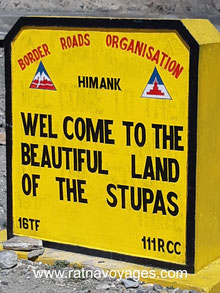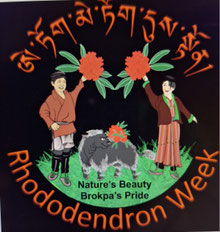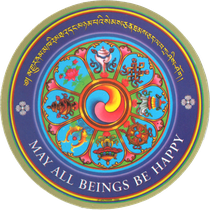STAKNA MONASTERY, INDUS VALLEY NEAR LEH - LADAKH

|
NAME/NOM/ NAME/NOME |
STAKNA GOMPA | |
|
|
||
|
LOCATION/LIEU/ ORT/LUOGO |
Stakna, 24KM from Leh | |
|
|
||
|
LINEAGE/TRADITION/ SCHULE/ORDINE |
Drugpa | |
|
|
||
|
FOUNDED/FONDÉ/ GEGRÜNDET/FONDATO |
16th Century | |
|
|
||
|
FOUNDER/FONDATEUR/ GRÜNDER/FONDATORE |
Cosje Jamyang Palkar | |
|
|
||
|
PROTECTOR/PROTECTEUR/ SCHIRMHERR/PROTETTORE |
||
|
SPIRITUAL HEAD/ MAÎTRE SPIRITUEL/ GEISTIGES OBERHAUPT/ CAPO SPIRITUALE |
||
| WWW./FACEBOOK | http://www.drukpa.org/ | |
|
BRANCH/AFFILIÉ/ ZWEIG/AFFILIATO |
||
| FESTIVAL | NA | |
| FESTIVAL 2024 | NA |
Stakna Monastery - Foundation and Establishment
Stakna Monastery, also known as Stakna Gompa, is a prominent Buddhist monastery situated in the Leh district of Ladakh, India. Here is a detailed history of Stakna Monastery
Stakna Monastery was founded in the late 16th century by a Bhutanese scholar and saint, Chosje Jamyang Palkar. The name "Stakna" translates to "Tiger's Nose," and the monastery is so named because it is perched atop a hill that resembles a tiger's nose.
Stakna Monastery - Drukpa Kagyu Tradition
Stakna Monastery follows the Drukpa Kagyu tradition, one of the Red Hat sects of Tibetan Buddhism. This tradition was introduced to Ladakh by the scholar and saint Lama Staktsang Raspa, who was invited by the local ruler to establish the monastery. The Drukpa Kagyu lineage places emphasis on the teachings of the Mahamudra, a profound meditation practice.
Stakna Monastery - Architectural and Artistic Significance
The monastery is known for its stunning architecture and picturesque location. The main Dukhang or assembly hall houses an impressive array of statues, thangkas (Buddhist paintings), and religious artifacts. The central image in the hall is that of the Buddha, surrounded by other deities and enlightened beings. The monastery's architecture, with its vibrant colors and traditional Tibetan design, reflects the rich cultural heritage of Ladakh
Stakna Monastery - Monastic Life and Education
Stakna Monastery has served as a center for monastic education and spiritual practice. The resident monks, following the Drukpa Kagyu lineage, engage in the study of Buddhist philosophy, rituals, and meditation. The monastery has contributed to the preservation and propagation of Buddhist teachings in the region.
Stakna Monastery - Religious Festivals
Like many monasteries in Ladakh, Stakna celebrates various religious festivals with colorful mask dances and rituals. These festivals, such as the Gustor Festival, attract both locals and tourists, offering an opportunity to witness the vibrant cultural and religious traditions of the region.
Stakna Monastery - Geographical Significance
Stakna Monastery's location on a hill provides panoramic views of the surrounding landscape, including the Indus River flowing below. The monastery's strategic location historically served as a vantage point, allowing monks to keep watch over the surrounding areas.
Stakna Monastery - Contributions to Ladakh's Cultural Heritage
Over the centuries, Stakna Monastery has become an integral part of Ladakh's cultural and religious fabric. It stands as a testament to the enduring legacy of Buddhism in the region and contributes to the unique identity of Ladakh.
Stakna Monastery - Tourism and Preservation
In the contemporary era, Stakna Monastery has become a popular tourist destination. Visitors come to admire its architecture, experience the serenity of the surroundings, and learn about the rich history and cultural significance of the monastery.
Stakna Monastery continues to be a spiritual haven and a symbol of Ladakh's deep-rooted Buddhist heritage, welcoming those seeking both inner reflection and cultural exploration.






























